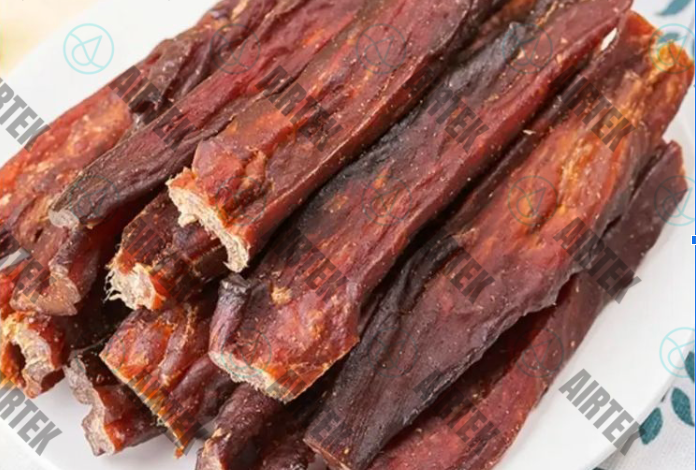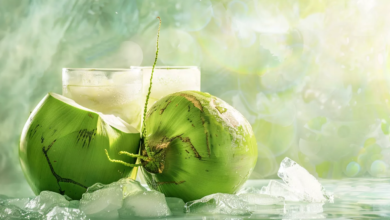Understanding the Science Behind Pet Food Dehydration

People are more aware today about what they feed their pets. Together with the ingredients used in food and nutrient value, the kind of food preservation has become a factor. The process of dehydration is amongst the ways under consideration, as it does not require the use of any type of additives or cold temperatures to preserve food.
You can use reliable pet food dryers for optimum results.
Dried pet foods are lighter, they hold up longer, and they can maintain much of the flavour and nutritional value of the original raw foods. The beauty though is in the way this food is processed. Dehydration is reduced and controlled heat and airflow, and it eliminates this moisture but maintains essential nutrients and ensures safety. You can use the best pet food dryers for a great experience.
What Is Pet Food Dehydration?
The dehydration of pet food is associated with removing any water content in raw or cooked stuff so that the food remains stable when stored. The decrease in moisture will help the manufacturers eliminate the need of developing bacteria, mould and other spoilage species. This preserves the food and extends shelf life and makes the food safe to store at room temperature.
Dehydration in the case of pet food manufacturing normally takes place under controlled heat. Heat pump systems, are warming air and effective airflow that will dehumidify pet food evenly and delicately. Dehydration however does not involve hot temperatures as do baking or frying. This will preserve original flavour and nature of food, its texture, and its goodness.
The Role of Temperature in Dehydration
Drying depends on temperature. An excessive amount of heat may degrade nutrients, give rise to uneven drying or even burning the product. Inadequate heating may not kill dangerous bacteria or leave moisture, which exposes it more to spoilt food.
Most dehydrated pet foods are processed at temperatures between 60 to 80 degrees Celsius. This range is high enough to remove water and eliminate common pathogens but low enough to preserve proteins, vitamins, and fats. Heat pump drying systems regulate this temperature throughout the drying chamber, ensuring a stable and uniform environment for all pieces of food.
Why Airflow Distribution Matters
Temperature is not the only thing important in dehydration other than the airflow. The food must be surrounded by moving air to remove the moisture which evaporates. Failure to affect good airflow during the process makes the process uneven. There is a possibility that some pieces become over-dried whereas others turn out to be wet in the center.
The drying systems pay particular attention to the properly balanced air distribution both over the trays and the layers. This is one of the ways of avoiding case hardening, a situation that results in the surface of the food drying too fast and trapping moisture hence making the product unstable. Even distribution of the airflow by ensuring uniform drying will result in safer and higher quality of the end product.
See also: Why You Should Always Choose a Company That Offers Complete Plumbing Services
Moisture Levels and Shelf Stability
When drying pet foods, the objective is to attain a given final moisture level with most of them falling within the range of 8 percent to 20 percent. By lowering the moisture to this extent, microbial growth is considerably retarded, the food is shelf stable at normal temperatures, and the food properly undergoes the process of food sterilisation.
Reduction of moisture will also ensure that there is no clumping and spoilage during transportation or storage. A uniform drying procedure will allow all food items to contain the same amount of moisture and thus it will contribute to quality uniformity and lack of growth of mould or bacteria.
Preserving Nutritional Value
One of the benefits of dehydration is that most of the original nutrients present in the raw goods are maintained. The proteins are not much damaged and vitamins such as B-complex and fat-soluble including Vitamin A and E stay less damaged than they are in high-heat cooking.
In low-temperature drying, the oxidation of the healthy oil is prevented, and thus they can preserve the original flavour, colour, and aroma of ingredients. This renders the food more tasteful to pets and helps to maintain a nutritional balance, particularly in the diet of the natural components that it consists of such as meat, fish, and vegetables.
Texture, Weight, and Rehydration
The pet food that is dehydrated has a reduced weight hence small, which makes storage and shipment easy. The texture of the food is also modified as the item is dried resulting in a crisp or chewy bite by varying the drying conditions and recipe items.
Importantly, dehydration leaves behind microscopic pores within the food structure. These pores improve the food’s ability to rehydrate quickly when water is added, which can be especially beneficial for pets with dental issues or those who prefer softer textures. Rehydration also helps release the original flavours and smells of the food.
Food Safety and Hygiene
Hygiene is a top priority in commercial pet food production. Dehydrators used in food processing must be easy to clean and designed to prevent cross-contamination between different batches. These types of systems allow for safe transitions between different types of food—such as switching from meat to fruits or vegetables—without compromising hygiene.
Effective drying not only reduces microbial load but also allows pet food producers to meet food safety standards. The ability to maintain uniform drying and stable conditions across all trays helps reduce the risk of bacterial survival and supports long-term shelf life.
Energy Efficiency in Dehydration
Heat pump drying systems are designed to be energy-efficient. Unlike traditional dryers that release heat into the environment, these systems recirculate warm air, reducing energy waste and lowering operational costs. They achieve high-quality drying with minimal energy input, making them suitable for both large-scale and smaller commercial operations.
This efficiency is particularly valuable for pet food producers who want to scale up production without significantly increasing their environmental footprint. Reduced power consumption and faster drying times help improve output while maintaining quality.
Considerations and Challenges
While dehydration has clear advantages, it also comes with some limitations. It requires careful control of temperature and airflow, and the process can take longer than conventional methods like baking or extrusion. Additionally, the cost of installing high-efficiency dryers may be high for small businesses.
However, the long-term benefits—such as extended shelf life, improved product quality, and reduced spoilage—often justify the investment. Proper training, equipment maintenance, and recipe testing are also necessary to ensure reliable results in commercial use.
Conclusion: Science That Supports Pet Health
Pet food dehydration is more than a preservation method—it is a science-driven process that balances food safety, nutritional retention, and production efficiency. By carefully managing heat, moisture, and airflow, dehydrators help create pet food that is healthy, stable, and enjoyable for animals. Modern drying systems are designed with precision and safety in mind. They allow pet food producers to deliver consistent results while maintaining the natural quality of ingredients. Understanding how dehydration works helps both manufacturers and consumers make informed decisions about the food they create and use.





